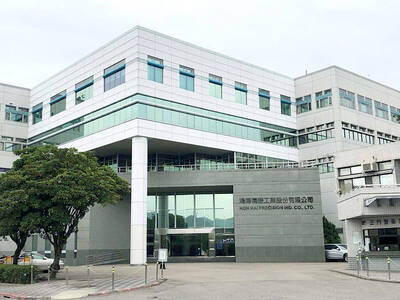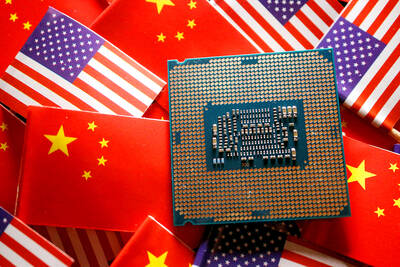Russia said on Friday it had ordered the construction of an oil pipeline from its huge Siberian oilfields to the Pacific Ocean opposite Japan, in a move to boost export opportunities throughout East Asia and to the US.
A "system of pipelines" with an annual capacity of 80 million tonnes would be built from Taishet in Siberia to Perevoznaya near Vladivostok and the eastern port of Nakhodka, the government said in a statement.
Energy-thirsty Asian rivals Japan and China have been furiously competing for several years for access to supplies from the world's second biggest oil exporter after Saudi Arabia.
But the 4,130km link to Nakhodka become the preferred option earlier this year after lengthy talks with Tokyo, which has said it would finance its construction.
No price tag was put on the project on Friday, but Russian officials have said previously it would cost some US$16 billion or almost seven times the cost of the alternative option to China.
Moscow's decision to pump its vast eastern Siberian oil supplies toward Japan will come as a blow to China, whose energy-hungry economy has turned it into the world's second largest oil consumer after the US.
Negotiations with China were complicated by environmental concerns, with neither side able to agree on the route.
And for Russia, the Pacific route means that besides Japan, it could supply oil to other countries in the region, including South Korea, and even, potentially, the west coast of the US.
Officials in Beijing have raised the possibility that a branch of Russia's Pacific pipeline could be diverted eventually to China, where energy demand continues to outpace supply, although there was no mention of this in Friday's statement from Moscow.
But in a major sweetener for Beijing, Industry and Energy Minister Viktor Khristenko on Thursday announced that Chinese oil conglomerate CNPC could be offered up to 20 percent of the main asset of the dismembered Russian energy supplier Yukos.
In what would amount to a strategic energy tie-up between Russia and China, Khristenko said China National Petroleum Corporation (CNPC) could end up owning a significant chunk of the assets of Yuganskneftegaz, which pumps a million barrels a day and owns 17 percent of Russia's oil reserves.
Moscow has signed agreements with CNPC reflecting bilateral "strategic understandings" on the expansion of energy cooperation, deemed vital to long-term economic growth in both countries, he said.
Yukos founder Mikhail Khodorkovsky, a political enemy of Russian President Vladimir Putin, was a strong supporter of the China option for the eastern Siberian pipeline. He has been in jail since October last year, facing fraud and tax evasion charges, and his company is being dismantled to pay a massive bill for back taxes.
Russia is also proposing to pump oil west towards the Adriatic and ports in Albania, Croatia and Greece, and north to serve North America via a Barents Sea port, as it strives to boost its ability to supply rising demand in international markets.
In October Khristenko said Russia's international oil pipelines would transport 303 million tonnes a year by 2010 and 433 million tonnes by 2020. Last year the pipeline network handled 182 million tonnes of Russia's total exports of 223 million tonnes.
Russian production of crude oil should reach between 550 and 590 million tonnes per year by 2020 owing to development of resources in western Siberia and the Far East, the energy minister has said.
The state energy agency has forecast oil production will increase by six percent to eight percent from last year's output of 421 million tonnes.

Shares in Taiwan closed at a new high yesterday, the first trading day of the new year, as contract chipmaker Taiwan Semiconductor Manufacturing Co (TSMC, 台積電) continued to break records amid an artificial intelligence (AI) boom, dealers said. The TAIEX closed up 386.21 points, or 1.33 percent, at 29,349.81, with turnover totaling NT$648.844 billion (US$20.65 billion). “Judging from a stronger Taiwan dollar against the US dollar, I think foreign institutional investors returned from the holidays and brought funds into the local market,” Concord Securities Co (康和證券) analyst Kerry Huang (黃志祺) said. “Foreign investors just rebuilt their positions with TSMC as their top target,

REVENUE PERFORMANCE: Cloud and network products, and electronic components saw strong increases, while smart consumer electronics and computing products fell Hon Hai Precision Industry Co (鴻海精密) yesterday posted 26.51 percent quarterly growth in revenue for last quarter to NT$2.6 trillion (US$82.44 billion), the strongest on record for the period and above expectations, but the company forecast a slight revenue dip this quarter due to seasonal factors. On an annual basis, revenue last quarter grew 22.07 percent, the company said. Analysts on average estimated about NT$2.4 trillion increase. Hon Hai, which assembles servers for Nvidia Corp and iPhones for Apple Inc, is expanding its capacity in the US, adding artificial intelligence (AI) server production in Wisconsin and Texas, where it operates established campuses. This

H200 CHIPS: A source said that Nvidia has asked the Taiwanese company to begin production of additional chips and work is expected to start in the second quarter Nvidia Corp is scrambling to meet demand for its H200 artificial intelligence (AI) chips from Chinese technology companies and has approached contract manufacturer Taiwan Semiconductor Manufacturing Co (TSMC, 台積電) to ramp up production, sources said. Chinese technology companies have placed orders for more than 2 million H200 chips for this year, while Nvidia holds just 700,000 units in stock, two of the people said. The exact additional volume Nvidia intends to order from TSMC remains unclear, they said. A third source said that Nvidia has asked TSMC to begin production of the additional chips and work is expected to start in the second

US President Donald Trump on Friday blocked US photonics firm HieFo Corp’s US$3 million acquisition of assets in New Jersey-based aerospace and defense specialist Emcore Corp, citing national security and China-related concerns. In an order released by the White House, Trump said HieFo was “controlled by a citizen of the People’s Republic of China” and that its 2024 acquisition of Emcore’s businesses led the US president to believe that it might “take action that threatens to impair the national security of the United States.” The order did not name the person or detail Trump’s concerns. “The Transaction is hereby prohibited,”